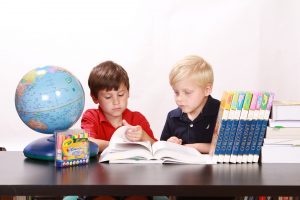179003291
The primary section of compulsory schooling will run from 3-14 and will take a nonselective approach to admissions as it will be open and free for anyone who wishes to attend. The system will take a first come first served approach to student uptake so that the area you are from does not limit the education received. All parents will have the same admission date and they will be no advantages, for example it does not matter where siblings attend this will not increase chances of admittance. This is to mitigate parents who have extensive knowledge of the system filling up spaces first. It means that all children receive the same level of education as they are all attending similar institutions.
Home-schooling won’t be allowed as it allows children to be unanswered for and this system aims to create a safe space for all children (Lubienski 2000). This system aims to create a safe environment for all children and will make sure that their health and wellbeing is the prime focus (Department for education 2019a). This will be done through making sure the education system creates an inclusive and democratic environment whist working with their peers. The system will create a connective education that ‘unites all human abilities the head, hands, heart and soul’ (Buckles 2018 p146).
The alternative schooling system will start at the age of 3 years old which is based on Montessori’s ideas around language development (Montessori 1949). Language skills are best developed before the ages of seven therefore starting the system at three years old allows children the best chance of being bilingual (Herschensohn 2007). Allowing children the extra 2 years to develop language skills could be beneficial to them in later life. With the current system having funding for children 3-5 years old in form of a nursery environment already this wouldn’t come as an extra expense to the tax payer.
The primary section of the alternative system will aim to be inclusive throughout the whole educational process which is something that current education system doesn’t provide. The first part of the alternative system that will be made inclusive will be the approach to assessment. Assessment from ages 3-14 will not be standardised as at this age our system believes the children are still developing so there in no need to be comparing them to other children. Assessment will be done from the age of 3-14 years old however it will not be done through testing. Assessment between these ages will be done through covert observations (Montessori 1949) and peer-assessment. Peer assessment allows children to work with their peers to complete tasks (Vygotsky 1978). It allows children to share their ideas with one another and better their knowledge (Vygotsky 1978). Covert observation will be done by the teachers and assistants in the classroom. This will be done so the children do not know it’s happening which means teachers can get a true reflection of the child’s strengths and weaknesses.
The primary section of the alternative system will aim to be a collaborative process. Children will visit an outdoor learning centre once every two weeks to so that some children can learn in active way (Idol 1997). Outdoor learning incorporates children’s interests and curiosity (Moody 2017) which allows children to work together to build friendships and share ideas. It allows children to co construct their own knowledge through experiential learning (Obrien 2009). Experiential learning is of great importance in this system as it believes that some children learn by doing and it aims not to exclude these types of learners. Collaborative work is a social constructivist way of learning (Vygotsky 1978). This alternative system aims to promote learning through sharing knowledge with peers so they will be a focus on working with others in the younger ages. Children will work collaboratively to share and pass on knowledge as everyone has different skills to share (Vygotsky 1978). The teacher is not there to just give a set of instructions they will be guiders of knowledge and help children to gain knowledge through their experience (Montessori 1949).
Democracy is important in the 21st century and it is not something that is focused on in the current education system. This alternative system will place a large importance on democracy, and it will be taught from 3-14 years old. Democracy will be incorporated into most lessons as it something that will be of importance in the later years. The children will be taught how to be democratic and how to express their democratic rights. Free choice learning will be used to help make education inclusive as it allows the child to make a democratic decision on which activity is best for them (Neill 1967). However, it won’t be complete freedom as the child of younger age still needs some structure to succeed in learning (Montessori 1949). Democracy in the younger years will mainly be about the preparation of how to use it in the secondary section of the compulsory schooling.
The primary section of the alternative system is about creating a positive learning environment which allows children to develop in a way that suits them whilst working with their peers. The primary section prepares for the later years and ensures that children have the skills they need to succeed in the assessments they choose. It aims to create a safe space where children feel like their interests are listened too and used to create an education system that suits them personally.
